The Most Common Types of Ants in California
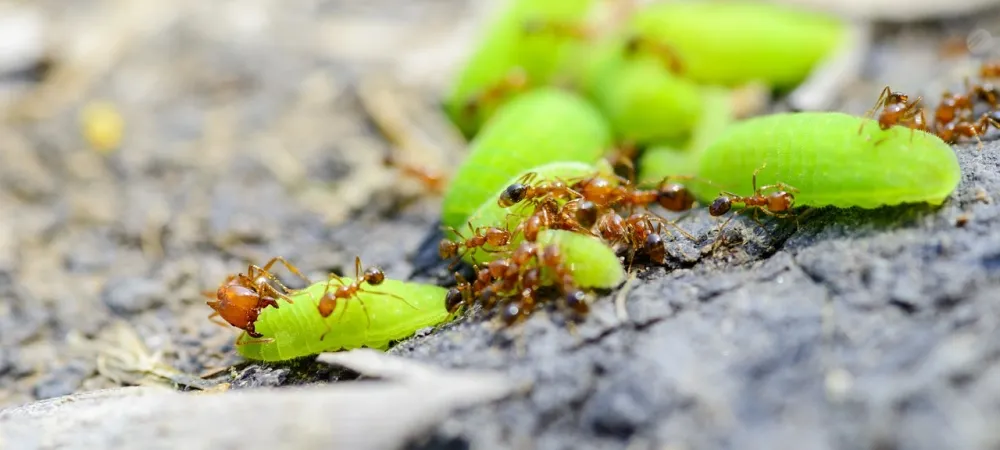
Ants, those tiny yet determined creatures, are among the most common household pests in California. While they play essential roles in ecosystems, their presence within homes can be a nuisance. Among the diverse ant species in the state, these common types of ants stand out for their frequent encounters with homeowners:
- Pavement Ants
- Fire Ants
- Thief Ants
- Argentine Ants
- Carpenter Ants
- Odorous House Ants
- Velvety Tree Ants
Pavement Ants (Tetramorium caespitum)
Pavement ants are a familiar sight in California, often making their homes in cracks and crevices in sidewalks, driveways, and building foundations. Recognizable by their dark brown to black coloration and distinctive parallel lines on their bodies, these ants are opportunistic foragers, scavenging for food scraps and sweets in homes and businesses.
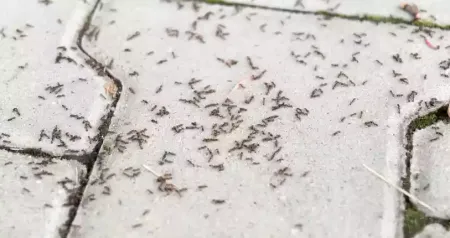
Behavior
- Pavement ants are not aggressive toward humans but can become a nuisance when they invade indoor spaces in search of food.
- They establish large colonies with multiple queens, making them resilient to eradication efforts.
- These ants are attracted to sugary substances, grease, and protein-rich foods, often invading kitchens and pantries.
Control Measures
- Sanitation: Keep indoor and outdoor areas clean, eliminating food sources that attract ants.
- Sealing Entry Points: Seal cracks and gaps in foundations, doors, and windows to prevent ant entry.
- Ant Baits: Use ant baits specifically designed for pavement ants, placing them along ant trails and near nest entrances.
- Professional Pest Control: For severe infestations, consult with a pest control professional for targeted treatment options.
Fire Ants (Solenopsis spp.)
Fire ants are notorious for their painful stings and aggressive behavior. In California, the most common species is the Southern Fire Ant (Solenopsis xyloni), known for its reddish-brown coloration and large mounds in outdoor spaces. These ants pose both health risks and property damage concerns.
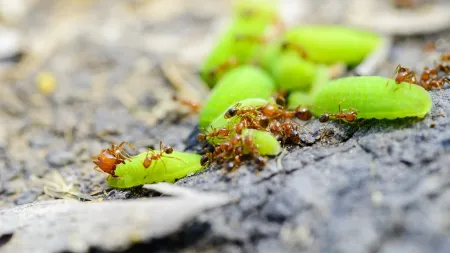
Behavior
- Fire ants are territorial and will defend their nests aggressively, often swarming and stinging intruders.
- Their stings can cause painful welts and, in sensitive individuals, severe allergic reactions.
- They build large, dome-shaped mounds in soil, typically in open areas such as lawns, gardens, and parks.
Control Measures
- Mound Treatments: Apply insecticidal treatments directly to fire ant mounds, following product instructions carefully.
- Baiting: Use fire ant baits containing slow-acting insecticides that are carried back to the colony, effectively targeting the entire population.
- Regular Inspections: Monitor outdoor areas for new mounds and activity, addressing infestations promptly.
- Protective Clothing: When working in areas with fire ants, wear protective clothing and footwear to avoid stings.
Thief Ants (Solenopsis molesta)
Thief ants, named for their habit of stealing food from other ant colonies, are small and often go unnoticed until they become a persistent problem indoors. These ants are light brown to yellowish in color and are attracted to a wide range of food sources, including sweets, oils, and proteins.
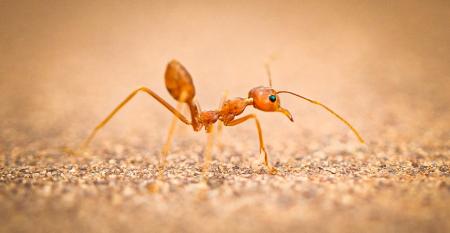
Behavior
- Thief ants are tiny, making them adept at infiltrating homes through small cracks and gaps.
- They establish nests in wall voids, under floors, and near sources of moisture, such as kitchens and bathrooms.
- These ants can contaminate food supplies and surfaces, posing sanitation concerns.
Control Measures
- Eliminate Food Sources: Store food in airtight containers, clean up spills promptly, and maintain a tidy kitchen environment.
- Seal Entry Points: Seal cracks, gaps, and openings around doors, windows, and utility penetrations to prevent ant entry.
- Ant Baits: Use ant baits formulated for thief ants, placing them near ant trails and suspected nesting sites.
- Indoor Pest Control: Consider using indoor-safe insecticides or contacting a pest control professional for targeted indoor treatments.
Argentine Ants (Linepithema humile)
Argentine ants are highly invasive and form expansive colonies with multiple queens. They are light to dark brown in color and often form visible trails along sidewalks, walls, and outdoor areas. These ants are skilled foragers and can quickly infest homes, posing challenges for eradication.
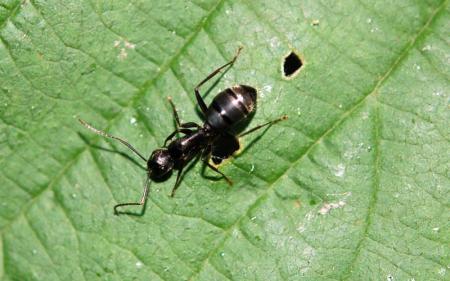
Behavior
- Argentine ants are known for their large, interconnected colonies that can span vast areas, making them difficult to control.
- They prefer sweet substances but will also feed on proteins and fats, leading them to invade kitchens, pantries, and food storage areas.
- They are adaptable and can thrive in various environments, including urban, suburban, and natural landscapes.
Control Measures
- Ant Baits: Use ant baits specifically designed for Argentine ants, placing them along ant trails and near nest entrances.
- Trim Vegetation: Trim back vegetation and foliage touching exterior walls to reduce ant access to the home.
- Seal Entry Points: Seal cracks, gaps, and openings around doors, windows, and utility penetrations to prevent ant entry.
- Regular Monitoring: Monitor outdoor areas for ant activity, especially near potential entry points, and address infestations promptly.
Carpenter Ants (Camponotus spp.)
Carpenter ants are renowned for their wood-damaging behaviors, making them a significant concern for homeowners with wooden structures. They vary in size and color but are typically large, with black or reddish-brown hues. Unlike termites, carpenter ants do not consume wood but excavate galleries for nesting.
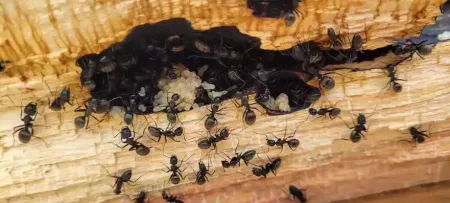
Behavior
- Carpenter ants prefer moist, decaying wood but can also infest sound wood, causing structural damage over time.
- They establish nests in wall voids, attics, crawlspaces, and wooden structures such as decks and fences.
- Frass (sawdust-like material) near wood openings or on surfaces is a common sign of carpenter ant activity.
Control Measures
- Identify Nesting Sites: Locate and identify carpenter ant nesting sites, focusing on areas with moisture issues or wood damage.
- Remove Decayed Wood: Replace or repair moisture-damaged wood to eliminate nesting sites and reduce ant attraction.
- Insecticidal Treatments: Apply insecticidal dusts or sprays directly into carpenter ant nests, following product instructions carefully.
- Professional Inspection: Consider hiring a pest control professional for thorough inspections, especially for extensive or recurring infestations.
Odorous House Ants (Tapinoma sessile)
Odorous House Ants are aptly named for the unpleasant odor they emit when crushed, often described as a "rotten coconut" smell. These ants are small, ranging from brown to black in color, and are commonly found foraging indoors and outdoors. They are attracted to sugary foods but will also consume meats and other organic matter.
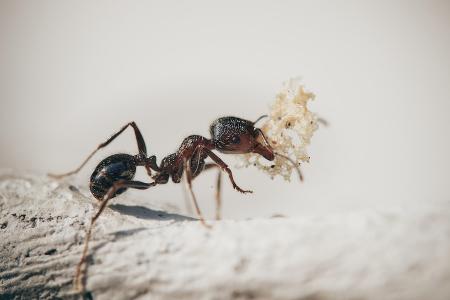
Behavior
- Odorous House Ants are prolific foragers, forming trails along walls, floors, and countertops in search of food sources.
- They nest in a variety of locations, including wall voids, under floors, and in garden soil, making them adaptable to diverse environments.
- These ants can quickly become a nuisance in kitchens, pantries, and dining areas, contaminating food supplies.
Control Measures
- Sanitation: Maintain cleanliness in kitchens and food storage areas, promptly cleaning up spills and crumbs to eliminate food sources.
- Ant Baits: Use ant baits designed for Odorous House Ants, placing them along ant trails and near nesting sites.
- Seal Entry Points: Seal cracks, gaps, and openings around doors, windows, and utility penetrations to prevent ant entry.
- Outdoor Treatments: Apply residual insecticide sprays or granules around the perimeter of the home to deter outdoor foraging ants.
Velvety Tree Ants (Liometopum occidentale)
Velvety Tree Ants, also known as "velvety treehoppers," are unique in appearance and behavior compared to other ant species. They are large ants with a velvety, dark brown to black appearance and are commonly found nesting in trees, shrubs, and outdoor structures. These ants are less of an indoor nuisance but can be problematic in outdoor spaces.
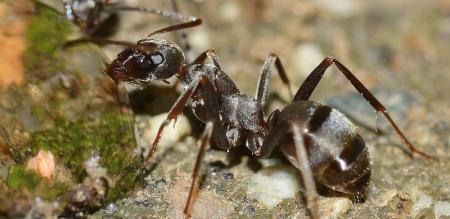
Behavior
- Velvety Tree Ants are arboreal, meaning they nest and forage primarily in trees and vegetation, especially citrus and ornamental plants.
- They protect aphids and scale insects, feeding on the honeydew produced by these insects, which can lead to plant damage.
- While they rarely invade indoor spaces, their presence in gardens and landscapes can be concerning for plant health.
Control Measures
- Pruning and Trimming: Trim back branches and vegetation touching the home to reduce ant access points.
- Ant Baits: Use ant baits formulated for outdoor ant species, placing them near ant trails and around trees or shrubs with ant activity.
- Ant Barrier: Create a physical barrier around trees and plants using sticky barriers or insecticide-treated bands to deter ant movement.
- Natural Predators: Encourage natural predators of aphids and scale insects, such as ladybugs and lacewings, to control ant-associated pest populations.
Invest In Professional Ant Control
Ants are resilient and adaptable pests that require proactive management to prevent infestations. If you are looking to get rid of ants once and for all, professional pest control services offer the most effective and comprehensive solution for safeguarding your home against common pests, like ants, throughout the year. With trained exterminators, advanced techniques, and tailored treatment plans, our team at Sorenson Pest Control ensures thorough inspections, targeted eradication, and long-term prevention strategies for communities throughout Northern California. Don't let pesky ant invasions disrupt your peace of mind or jeopardize your property's integrity. Invest in ant control today for a pest-free environment and a home that remains protected against unwanted intruders.


